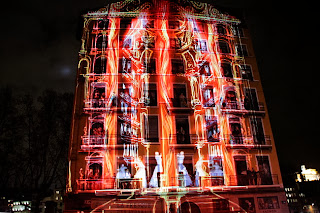If you are interested in 18th century European history and the occult, in alchemy and secret societies, then you have probably come across the elusive and mysterious Count Saint Germain.
The only known portrait of Count Saint-Germain
Why the lasting fascination for this character? Was he the illegitimate son of European royals or just a spy? Was he an alchemist who could 'make' gold nuggets and huge diamonds, a Rosicrucian who had mastered the secrets of eternal life or a charlatan? In his correspondence with Frederick the Great of Prussia, Voltaire called him
'Der Wundermann' and said that he was 'a man who knows everything and who never dies' (although the philosopher being known for his irony, we can presume that he was joking).
It is easy to understand why such a character has fascinated people for so long. Not only did Saint-Germain cultivate the mystery around his lineage, but his name was also linked to powerful secret societies - the Freemasons and Rosicrucian.
Were his parents Francis II Rackoczy, Prince of Transylvania, and Princess Violenta-Beatrice of Bavaria, like he confided to Prince Karl of Hesse-Kessel, or was he the illegitimate offspring of Marie-Anne de Neubourg, Queen of Spain? If no one knows for sure who his parents were, it is however established that he was raised in Italy by a member of the Medici family and attended the university of Sienna.
Prince Francis II Rakoczy of Transylvania
He seemed to possess a vast fortune, was always immaculately dressed and had a predilection for precious stones. He spoke several languages fluently, had a charismatic personality. A virtuoso violin player, he composed sonatas and arias. He was also a talented painter and a scientist interested in new processes to dye fabrics. He mixed in the most exclusive circles, and travelled extensively under different names (he called himself Surmont in Belgium, Count Tsarogy in Bavaria, Count Welldone in Germany...)
It is during the Jacobite rebellion that the Count's name first appears in official documents. In a 1745 letter to Horace Mann, Horace Walpole writes that a man who calls himself Saint-Germain has been arrested, then released without charge although it is believed that he is a spy. Walpole writes that the man is 'mad' and certainly 'not a gentleman' despite possessing a vast fortune and playing the violin 'wonderfully'. He then comments about Saint-Germain never having 'any dealings with a woman or a succedaneum' (a substitute??). As for his appearance, it seems at odds with the only known portrait of him, since Walpole describes him as having 'extremely black hair' and a beard.
Horace Walpole
Saint-Germain reappears twelve years later in France when he is introduced to the French court by Maréchal Belle-Isle. He is granted quarters at the chateau of Chambord and quickly becomes a favourite of Louis XV and his mistress, Madame de Pompadour. The French King gives him a hundred thousand Francs and a laboratory to invent new dying processes for fabrics. More importantly, he starts using him as a secret agent, against the advice of his minister for foreign affairs, the Duc de Choiseul, who is deeply suspicious of the Count.

Things then become even more blurry. Desperate to discredit Saint-Germain, the duc de Choiseul hires an actor named Gauve to impersonate him. The fake Saint-Germain parades in fashionable salons, spreading ridiculous stories about being hundreds of years old, and having met Greek philosophers, Alexander the Great and even Jesus, to whom he predicted 'an abominable end'. When Gauve is found out, Choiseul's plan fails miserably. Instead of discrediting Saint-Germain, he only added to the man's appeal and mystery, and made him even more popular at court.
Soon people comment on how he never seems to age but retains the appearance of a man between forty and fifty years old. A Comtesse de Gergy tells Madame de Pompadour that he hasn't changed at all since she met him in Venice in 1710, where he supposedly gave her an elixir of youth (see below for receipe). The legend of Saint-Germain is born: does he really possess the secret of eternal life?
Although invited to many dinner parties, Saint-Germain is never seen eating in public. In fact, he says he only eats a kind of oatmeal mixture he prepares himself, and drinks an elixir made of elderflowers, fennel and senna pods soaked in spirit wine (senna pods? Aren't they used in laxatives?) which he advises fashionable ladies to take if they want to retain their youthful appearance.
In 1760, Choiseul almost manages to arrest Saint-Germain after the King sends him on a secret mission in Amsterdam, but the elusive Count escapes to England. After a couple of years, Saint-Germain travels to Belgium where he buys land under an assumed name. He then goes back to France in 1775 where he is rumoured to have warned Queen Marie-Antoinette about the impending revolution which would put in place a 'bloodthirsty republic' instead of royal power.

After more travels, Saint-Germain finally settles at the court of Prince Karl of Hesse-Kassel in the duchy of Schleswig-Holstein. The Prince is so taken by Saint-Germain that he calls him 'Old Papa'. He buys a factory near Gottorp, on the Baltic sea, for Saint-Germain to experiment with various fabric dying processes. He even writes to Jean-Baptiste Willermoz, a silk merchant in Lyon and sends samples of the Saint-Germain's dyes in the hope of getting him interested in a joint venture. The project however never sees the light of day. Count Saint-Germain dies of pneumonia on 27th February 1784.
Or does he?
Even though his death is registered in St Nikolai church at Eckernförde and it is recorded that he was buried in tomb No1 inside the church, there are soon rumours that Saint-Germain is still alive. Over the following decades, people swear to have spoken to him. One of them, Comtesse d'Adhemar, one of Marie-Antoinette's ladies in waiting, claims she saw him in 1815 and again in 1821!
Count Saint-Germain is one of the 18th century's most mysterious characters. I was always fascinated by the many tales and stories surrounding him, so much so that he was my inspiration for my debut historical romance
Angel Heart. In the novel, my heroin Marie-Ange, whose mother was Saint-Germain' goddaughter, has to retrieve a mysterious Templar relic of which Saint-Germain was made guardian and which is said to give eternal life...
Angel Heart is published by MuseitUp Publishing and is available from:
http://www.amazon.co.uk/Angel-Heart-ebook/dp/B009YJT194
http://www.amazon.com/Angel-Heart-ebook/dp/B009YJT194/ref=sr_1_2?s=books&ie=UTF8&qid=1371069109&sr=1-2













































.jpg)

